Grafana what is it and why is it needed?

Grafana is a free data visualization system focused on data from IT monitoring systems.
More about Grafana
In this article, we are considering Grafana and will try to discuss this tool in as much detail as possible, its capabilities, advantages and more.
Every year, the amount of information that even small businesses receive is growing exponentially. Due to the large amount of information, it becomes difficult to process it and you have to use additional tools to work with data.
Data analysis takes a lot of time and is a very difficult process. This is where Grafana appears.
Grafana was created on March 5, 2018 and is a set of tools for monitoring and analyzing data from both internal and external projects. In this tool, the user can create unique dashboards with panels that will show certain data for some time.
Data sources can be very different, for example, It supports heat maps, graphs, tables, etc.
From what is stated above, we can conclude that Grafana is a convenient tool for data analysis and monitoring. One of the very big advantages is the possibility of integrating Grafana into the system.
Grafana Features
There are quite a lot of things that can be attributed to the capabilities of this tool, but we will show you a couple of really important points.
- Integration with the database
You can use it in conjunction with many databases, for example, MySQL, Graphite, Influxdb, Logz.io etc.
- Creating your own plugins
Open source code will allow you to create your own plugin that will simplify your work.
- Placement
You can host it locally or in any cloud platform.
- Authentication
Grafana supports various authentication styles, including LDAP and OAuth, and allows you to display users in an organization.
These are not all the features that are available to you when using Grafana, but they are very important.
Advantages of Grafana
Some of the features we have already mentioned above. However, we will remind you about them in this list (the list will be incomplete, but the most significant advantages will be indicated.)
- All monitoring metrics in one place
Since there are many metrics that need to be constantly monitored and monitored, it is necessary to have a place to store all the metrics at once. It is Grafana that will allow you to easily track all the measures.
- Allows you to receive monitoring data in a convenient form
Graphana can connect to the storage and perform the necessary actions there. The analyst requests data and Graphana outputs them in a video convenient for him - simple tables, graphs, distributions and dozens of other data display formats.
- Custom Plugins
You can use plugins to extend Grafana and integrate it with other software, visualizations, etc.
- Alerts
If the expected scenario occurs, warnings are activated. These events can be reported to the monitoring team via Slack or another communication channel.
- SQL data sources.
Grafana's built-in SQL support allows you to turn everything in the SQL database into metric data that you can graphically display.
These are just a few of the features that we have indicated above and that can already confirm that the use of Graphane is actually very useful.
Why do companies use Grafana?
Grafana - gives some advantage to those companies that use it. Since this tool is an excellent solution for analytics, companies also get great advantages over competitors. For example, if your company needs to track which number of users uses a new feature, then Grafana will make it easy to track and draw conclusions. While your competitors will need time to collect information, you will receive everything with a slight delay.
It shows teams and companies what their customers are actually doing, not just what they claim. It is thanks to this that you can always know what attracts users, what you should focus on to increase the number of customers, etc.
How to install Grafana?
If you are interested in Grafana, then you need to install it to try it. You can find out how to do this in the following video.

